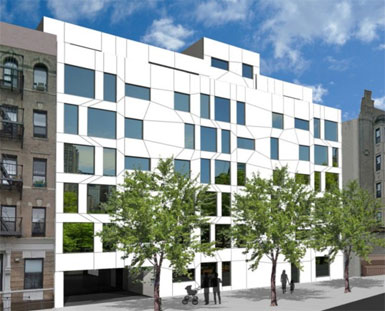While a 26-story Passive House apartment building moves toward completion on Cornell’s new technology campus on NYC’s Roosevelt Island, a smaller one opens to Harlem residents this spring.
The 7-story luxury Passive House apartment building is being built to the most stringent efficiency standards in the world, developed in Germany. With 34 apartments, Perch Harlem will consume 10-20% of the energy of a comparable conventional building. Construction firm Perch Living plans to start on a similar building in Brooklyn soon.
Passive House certification is the most stringent in the world, but it too is growing along with what’s becoming standard practice – LEED-certified buildings.
Perch Harlem opens in May:

Green buildings are now the preferred choice around the world, with the number doubling every three years, according to the report, "World Green Building Trends 2016." Having strongly penetrated markets in advanced nations, the most growth is in emerging economies like China, India and the Middle East.
US Still Leads
The US still leads on the number of green buildings by a wide margin, employing 2.3 million people. Canada is second and China is third.
While almost half of green buildings are commercial, residential buildings are about to get a boost through California’s building code. Starting in 2020, all new residential buildings must be net-zero energy, and by 2030, all new commercial buildings. Seattle is positioning itself as a hub for "smart building" technology development.
Read our article, US Architects Move Steadily Toward Net-Zero Energy.
"Sustainability is having a transformative effect on design and construction professionals globally," says Stephen Jones at Dodge Data & Analytics, whose survey of building professionals in 69 countries forms the basis of the report.
Clients want green buildings, say 40% of respondents. The second reason behind demand is environmental concern and regulations (35%), followed by occupant benefits such as creating healthier neighborhoods (15%) and greater return on investment (11%).
Read our article, By 2050, Urban Buildings That Breathe And Adapt.
Read, World Green Building Trends 2016:
